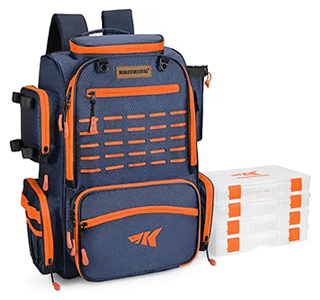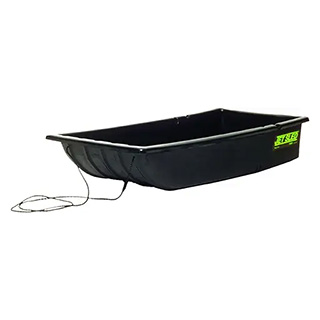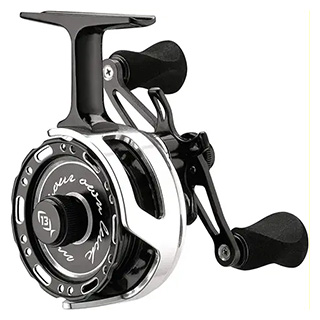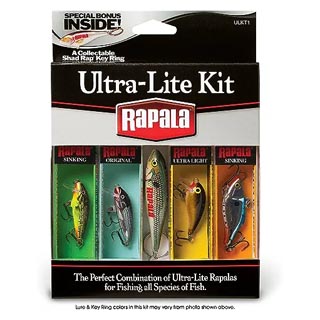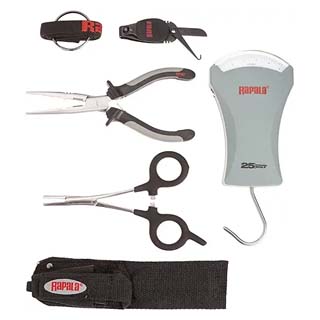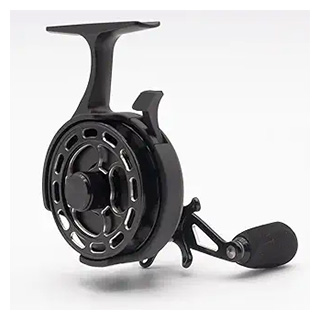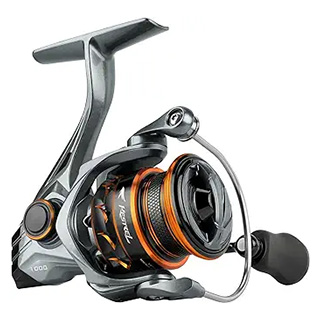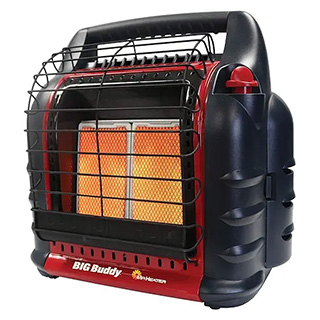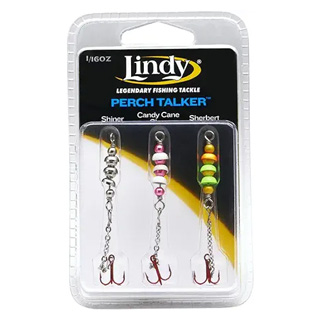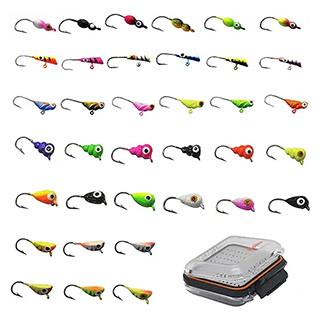Ontario Ice Fishing Hut Operators
Ice Fishing Articles And Tips

Ice Fishing Tips for Beginners
Did you hear the one about the guy who went ice fishing and came back with 50 lbs. of ice?
Well, if you found yourself here your at least one step ahead of this fella, that is unless you intended to bring home some ice.
Ice fishing is actually a very simple sport but must be practiced with some caution.
WHAT you say?
Seriously before you set out to catch any fish on "hard" water there a couple of things you should be concerned about. Firstly, make sure you are equipped with the proper attire.
Setting out from home on a nice sunny day is fine but once you approach your destination things may have drastically changed or may change without notice.
This would also be a good time to check the weather channel or newspaper for the up to date weatherforecast.
Secondly, remember to check the ice conditions wherever you go, there are local ice hut operators or locals who are willing to help make your trip safe.
A friend of mine told me once, "You can always take it off, but its pretty hard to put it on if you haven't got it!" My advice, purchase a good flotation suit. They are warm and if you happen to break thru the ice it will probably save your life.
A warm dry set of gloves, preferably without fingers is a must. This way all the fingers share the warmth. A full face belaclava is also required as well as sunglasses
. Scarfs can help but be cautionary of the vehicle you are using to get you out to your favorite spot. You don't want to have it get tangled up in a chain or track.
Several layers of clothes are a benefit for when you have the luxury of taking them off. Another good idea is to have a fishing buddy. They are not only there to enjoy the day with you and help make the fishing story a real tale but if an emergency arises they are the only support you've got.
We still have a few small things to do before setting out. Make sure your transportation is trustworthy, a general maintenance check will do and tell someone where your going and how long you expect to be gone and last but not least, a simple thing like a compass, so you don't get lost.
Okay, are we having fun yet. Now that we have got all the scary stuff done, its time to leave, right .... WRONG ! You forgot the ice fishing gear.
A general rule of thumb regarding gear is to choose the equipment you will need to match the fish you are seeking (e.g. the larger the fish, the heavier the tackle).
Of course you won't be able to get to them if you don't have a hole. So depending on the ice and your wallet or both, you are going to need an ice spud or hand\gas auger. You can purchase both but if you just happen to have a friend that welds you can get him to make the spud up for you out of a 6' x 2" piece of flat steel and round bar.
Don't forget to weld a "T" on the top and grind the flat bar down to a chisel point.
If you are in good shape and have the time the hand auger is great but if you intend to fish several spots and don't want to tire yourself out making holes get a gas auger. Look for an auger with at least a 6" cut just so you can get the big ones thru the hole.
Next, you'll need an ice skimmer. I suggest the aluminum one because if you are in a hut with a stove just warm it up a little and touch it to the hole and voila ... instant skim! Also, tie a light chain or rope on it just in case it falls down the hole.
Well, your almost there. You can't catch anything without some type of jigging rod. They come in all types, sizes and styles but look for one with which you will be comfortable with. This may take a few outings to discover, so see if you have a buddy who will lend you his or hers. Another general rule of thumb, a light rod for perch and panfish using 2 to 4 lb. test, medium action for trout, walleye, whitefish, etc. and 6 to 10 lb. test. The preferred reel is a micro-spinning reel.
If you are energetic an have a second hole you can also use a tip-up. They range in price from several dollars to around twenty-five bucks. Well, this should get you started. The rest you can learn from patience and experience. Good Luck and Good Fishing!
P.S. A couple of other things ... remember to take a light lunch with you, just in case they decide not to bite or your fishing technique is off for the day. I can remember a few times when we had to have "fish lip soup", it wasn't very filling and of course your fishing license other wise your outing could cost you dearly.
Well, seeing as you have made it this far. I guess an obvious question would be "When is the best time to go ice Fishing ?" Everyone I know wants to get out there as soon as possible. It is probably because the fishing seems to be a little better or more likely they just want to be the first one to haul one out of the hole.
It is true that the fish are relaxed and in the best feeding spots because they haven't been hassled for several months. Trout in particular spawn in the fall and can be found in deep water at this time. You can find them on bars, shoals, rocks and fingers. Perch, pike and walleye tend to look for shallow, weedy lakes because the oxygen level tends to be a lot higher.
Once the little villages spring up and the anglers take their toll the catches tend to decrease but don't despair they are still out there. You just have to work a little harder.
So you need a few pointers because your just not catching your limit.
Well what is it that you do in the summer time, whether you are fishing from shore or boat if your not getting the bites? ... You move.
I do it all the time, it's not hard if you've got your own sled and make sure you've got a power auger, you'll need it. In order to be mobile you really need to be prepared. This includes a portable shelter, flotation suit, auger, sled or 4x4, fish finder and GPS. Give yourself about 10 to 20 minutes per hole.
That's enough time to find your depth, scratch the bottom for debris, rocks, sand, etc., set up your fish finder and locate fish and at what depth. It also allows you to try your technique to see if they are interested. If you happen to have the hydrographic map of the lake or fished it before it helps. Try making calculated moves, such as holes, shoals, weedbeds.
If you can afford it, get yourself several rods and rig them up with different presentations. Not only do you become a quick change artist but it saves tying on different lures when the weather isn't friendly.
Jigging is really an art form. Not to fast and not to slow, kind of a rhythm thing. Keep in mind it is okay to jig hard at first, you want to attract them, get them interested. Once you've done that slow down to a twitch by using only your wrist or trolling from one side of the hole to the other. Alternatively you can raise the rod tip a few inches and lower. Stir up the bottom a little.
Make sure your rod is short, stiff and with big eyelets. It's hard to fish in a hut that's only 4 x 6 with a 3' rod. You only get one chance to set the hook, so if it moves you don't want the rod to bend. Having your line get frozen because of clogged eyelets just isn't any fun.
PAY ATTENTION! No, I'm not trying to wake you up from your daydream but feeling a hit is not the only way to get fish out of the hole. If you see the slightest movement, either side to side or up or down, set your hook! Remember, if your sending your lure down and it stops and your not where your suppose to be, you probably have one on the line.
Now, if you want to get them up the hole your going to need to hook 'em, so keep your hooks sharp. The easiest way to test is when you push the point thru the minnow, if the point doesn't go in easily either sharpen it or replace it. Speaking of hooks, size is important. The smaller the bait the smaller the hook. Also, If your using a large hook on a small bait you restrict it's movements and could possible even spook your game.
Timing the hook set is crucial when using minnowbait. It is well known that most fish attack from the side, so don't try to set the hook at the first sign of
movement or tug. Allow the fish time to swallow the minnow. Okay, so you lost your patience, had him and lost him.
Don't be in a hurry to change your bait, put the line back down the hole. Remember, he just lost supper and if
he's hungry he'll be back. Wait a couple of minutes and if you don't get a response your welcome to
change your bait.
OK, one final tip, take a friend with you. You'll want to share the experience but you
can save a lot of weight and space by not doubling up on your gear and sharing.
Iain Loveman
Fishing Article Of Interest: Ice Fishing Tips for More than Novices
